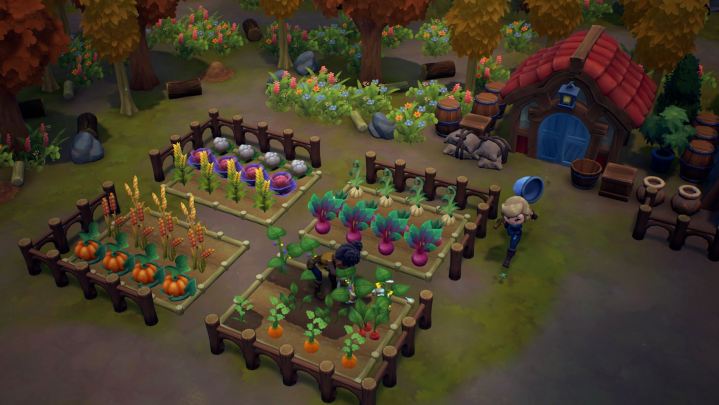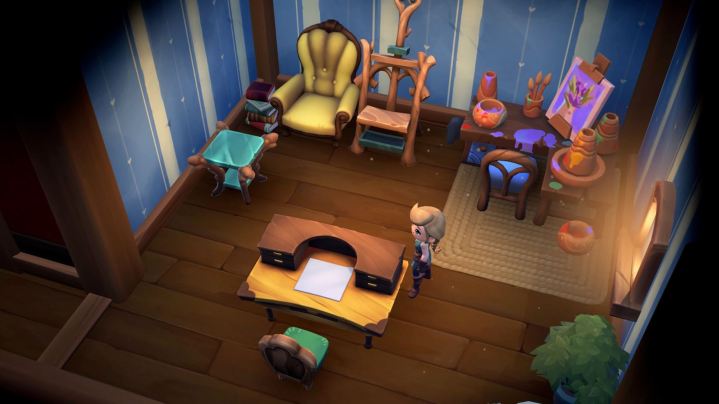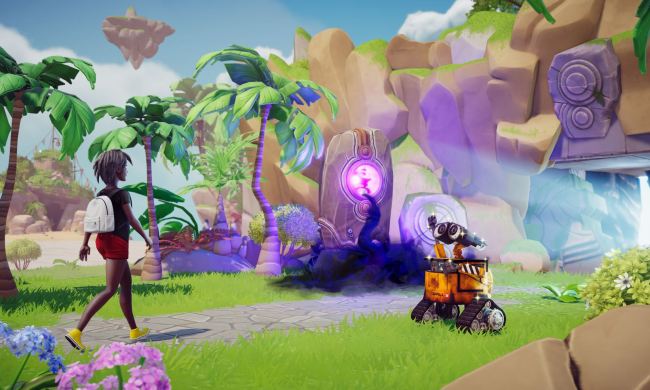I’ve played several farming and life sim games since I fell in love with Stardew Valley in 2017, but nothing has been able to live up to that game. In the past, I’ve attributed these shortcomings to things like slow-paced openings or mechanics that lag behind what Stardew Valley offers. But after playing through the first season in Fae Farm, Dauntless developer Phoenix Labs’ new cozy farming game, I finally recognize the real problem with most of these Stardew Valley clones: a lack of distinct, charming characters full of personality.
Fae Farm is a game designed for ease of use to a fault. It’s a very approachable farming sim game that recognizes the cozy appeal of living in a virtual town and tending to a farm on a daily basis. And while all of the genre’s mechanical rough edges are smoothed out, so is a lot of the personality. Because of that, I’m left focusing on the fact that this is a genre where games can get too repetitive very fast if you aren’t fully invested.
Characters not different enough
In Fae Farm, players show up on the island of Azoria and start tending to a farm there, completing quests for the townsfolk and eventually diving into dungeons for some light combat and resource gathering. It’s nothing wildly ambitious for the genre, but it feels great to play. Fae Farm will automatically equip whatever tool needs to be used for a situation, which pairs well with the tool improvements that allow players to cover greater swaths of land with their abilities.
There’s even a deeper amount of home and farm customization that feels more similar to Animal Crossing: New Horizons than Stardew Valley here. At first, I loved all of this. I’m all for games being more approachable, and the mechanics and enjoyment held up when I played a bit of the game’s multiplayer with someone else. The more time I spent with the game, though, the more its main shortcomings showed.

While the early missions of Fae Farm bring players around Azoria to introduce a cast of characters, none of them look or speak in very unique ways. Whereas characters like Abigail and Leah felt distinct from each other the first time I met them in Stardew Valley, few Fae Farm characters feel like anything more than vendors or quest givers. Even if this improves a bit as I play more, the fact that I’m already running into repeated quips from characters and anecdotal lines shared between different people isn’t a good sign.
While I could initially ignore Fae Farm’s lack of character and charm, the more I played, the more it felt like I was just filling out a checklist. I’d collect the resources, craft what I needed to process those resources, and then use those resources to craft more things and repeat the cycle. The world feels welcoming and charming, but everyone who lives in it failed to leave any impression. That means that Fae Farm’s repetitive gameplay loop lacks enough personality to make it feel distinct, which in turn leaves a game full of checklist-based quests and systems that don’t provide many challenges.
As a result, some of the more repetitious aspects of farming and life sim games are exposed here. That’s not to say that being repetitive is inherently negative; if you have a solid core gameplay loop, you can get a lot of mileage out of recontextualizing it. Stardew Valley has more nuanced and engaging stories and characters on top of its repetitive mechanic. Fae Farm lacks that extra layer and it sticks out in the current farming landscape because of it.

It isn’t just a critique of Fae Farm. This issue applies to other Stardew Valley clones that have disappointed me, like Harvestella, Story of Seasons: Pioneers of Olive Town, or My Time at Portia. Conversely, character-focused charm made Animal Crossing: New Horizons appealing to me for a few months in 2020, and that’s the only game that’s managed to match Stardew Valley for me — at least for a little bit.
Until a farming sim game can match Stardew Valley from both a gameplay and character-writing standpoint, it’s unlikely that any of the countless games it has inspired will dethrone it. Fae Farm isn’t a bad game by any stretch of the imagination; it’s one of the most approachable and multiplayer-friendly games the genre has seen recently. It’s worth picking up if that’s what you’re looking for, but don’t be surprised when you eventually get tired of it and return to what Digital Trends considers one of the best games of all time.
Fae Farm launches for PC and Nintendo Switch on September 8.



